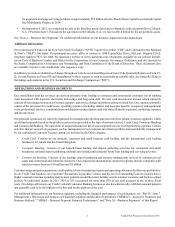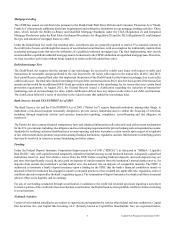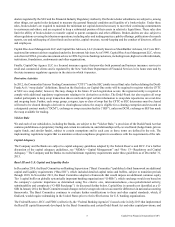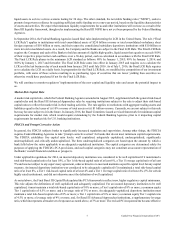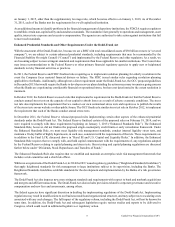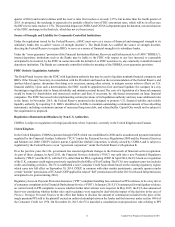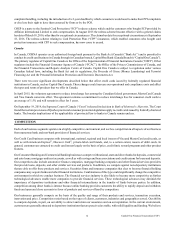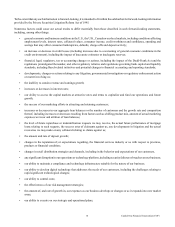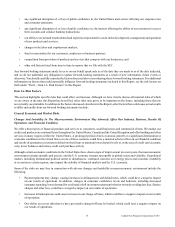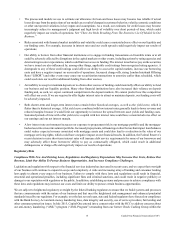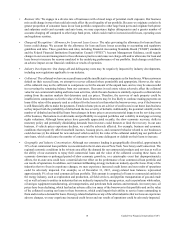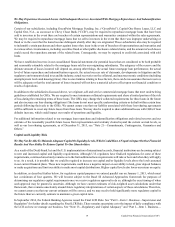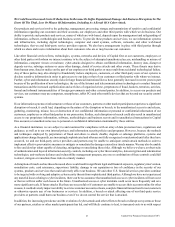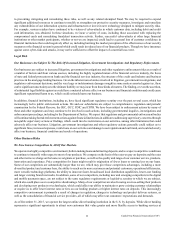Capital One 2015 Annual Report Download - page 31
Download and view the complete annual report
Please find page 31 of the 2015 Capital One annual report below. You can navigate through the pages in the report by either clicking on the pages listed below, or by using the keyword search tool below to find specific information within the annual report.
12 Capital One Financial Corporation (COF)
complaint handling, including the introduction of a 2-year deadline by which consumers would need to make their PPI complaints
or else lose their right to have them assessed by firms or by the FOS.
COEP is a party to the Sentinel Card Protection (“SCP”) redress scheme which enables customers who bought SCP provided by
Affinion International Limited to seek compensation. In August 2015 the redress scheme became effective with a general claims
bar date of March 18, 2016, other than for exceptional circumstances. The claims bar date for exceptional circumstances is September
18, 2016. The redress scheme relating to Card Protection Plan (“CPP”) insurance, which enabled customers who bought card
protection insurance with CPP to seek compensation, has now come to an end.
Canada
In Canada, COBNA operates as an authorized foreign bank pursuant to the Bank Act (Canada) (“Bank Act”) and is permitted to
conduct its credit card business in Canada through its Canadian branch, Capital One Bank (Canada Branch) (“Capital One Canada”).
The primary regulator of Capital One Canada is the Office of the Superintendent of Financial Institutions Canada (“OSFI”). Other
regulators include the Financial Consumer Agency of Canada (“FCAC”), the Office of the Privacy Commissioner of Canada, and
the Financial Transactions and Reports Analysis Centre of Canada. Capital One Canada is subject to regulation under various
Canadian federal laws, including the Bank Act and its regulations, the Proceeds of Crime (Money Laundering) and Terrorist
Financing Act and the Personal Information Protection and Electronic Documents Act.
There were two new significant developments described below that affect credit cards issued by federally regulated financial
institutions in Canada, such as Capital One Canada. These changes could increase our operational and compliance costs and affect
the types and terms of products that we offer in Canada.
In April 2015, the voluntary agreement to reduce interchange fees among the Canadian federal government, MasterCard Canada
and Visa Canada came into effect. The agreement contains a commitment to reduce interchange fees for consumer credit cards to
an average of 1.5% and will remain in effect for 5 years.
On September 19, 2014, the Supreme Court of Canada (“Court”) released its decision in Bank of Montreal v. Marcotte. The Court
found that certain provisions of Quebec provincial consumer protection legislation apply to credit cards issued by federally chartered
banks. The broader implications of the applicability of provincial law to banks in Canada remain unclear.
COMPETITION
Each of our business segments operates in a highly competitive environment, and we face competition in all aspects of our business
from numerous bank and non-bank providers of financial services.
Our Credit Card business competes with international, national, regional and local issuers of Visa and MasterCard credit cards, as
well as with American Express®, Discover Card®, private-label card brands, and, to a certain extent, issuers of debit cards. In
general, customers are attracted to credit card issuers largely on the basis of price, credit limit, reward programs and other product
features.
Our Consumer Banking and Commercial Banking businesses compete with national, state and direct banks for deposits, commercial
and auto loans, mortgages and trust accounts, as well as with savings and loan associations and credit unions for loans and deposits.
Our competitors also include automotive finance companies, mortgage banking companies and other financial services providers
that provide loans, deposits, and other similar services and products. In addition, we compete against non-depository institutions
that are able to offer these products and services. Securities firms and insurance companies that elect to become financial holding
companies may acquire banks and other financial institutions. Combinations of this type could significantly change the competitive
environment in which we conduct business. The financial services industry is also likely to become more competitive as further
technological advances enable more companies to provide financial services. These technological advances may diminish the
importance of depository institutions and other financial intermediaries in the transfer of funds between parties. In addition,
competition among direct banks is intense because online banking provides customers the ability to rapidly deposit and withdraw
funds and open and close accounts in favor of products and services offered by competitors.
Our businesses generally compete on the basis of the quality and range of their products and services, transaction execution,
innovation and price. Competition varies based on the types of clients, customers, industries and geographies served. Our ability
to compete depends, in part, on our ability to attract and retain our associates and on our reputation. In the current environment,
customers are generally attracted to depository institutions that are perceived as stable, with solid liquidity and funding. We believe


